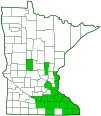white-flowered leafcup
(Polymnia canadensis)
Conservation • Description • Habitat • Ecology • Use • Distribution • Taxonomy
Conservation Status |
|
|||||||
| IUCN Red List | not listed |
|||||||
| NatureServe | N5 - Secure SNR - Unranked |
|||||||
| Minnesota | not listed |
|||||||
Description |
||
White-flowered leafcup is a large but little-known woodland wildflower. It occurs in the United States from Vermont to Georgia, west to Minnesota and Oklahoma, and in southern Ontario Canada. In Minnesota it is mostly restricted to the southeast corner of the state, where it reaches the northwest extent of its range. It is found in woodlands and forests. It grows under medium to light shade, in moist, loamy, limey (calcareous) soil. White-flowered leafcup is an erect, perennial forb that rises on multiple stems from fibrous roots and usually also from underground stems (rhizomes). It sometimes forms colonies. It can be 20″ to 70″ (50 to 180 cm) tall, but in Minnesota it is usually no more than 48″ (120 cm) in height. The stems and leaves are not fragrant when crushed. The stems are erect or ascending and usually have several branches toward the top. The upper stem is moderately to densely covered with long, soft, straight or shaggy hairs, and also with gland-tipped or sticky hairs. The lower stem is hairless or nearly hairless. The leaves are opposite and mostly 1½″ to 8″ (4 to 20 cm) long, and ¾″ to 4¾″ (2 to 12 cm) wide, on 1¼″ to 3⅛″ (3 to 8 cm) long leaf stalks (petioles). The largest lower leaves are sometimes much larger, up to 16″ (40 cm) long and 10″ (25 cm) wide on up to 4¾″ (12 cm) long petioles. The petioles are green or purplish near the base, grooved on the upper side, and covered with short, soft, glandular hairs. They are sometimes winged for a short distance but only near the blade. Larger leaves often have a rounded leaf-like appendage (stipule) at the base that wraps around the stem. Opposite stipules sometimes fuse together creating a short cup. This is the feature that gives the species its common name. Lower leaf blades are rounded to heart-shaped or egg-shaped in outline and are often deeply cut into 5 to 7 lobes. They are mostly broadly tapered at the base. The lobes are sharply pointed at the tip. The upper surface is dark green and may be hairless or sparsely to moderately covered with short, soft, curved, sometimes gland-tipped or sticky hairs. The lower surface is pale green and is sparsely to moderately covered with short, gland-tipped or sticky hairs, especially near the main veins. The margins are finely to coarsely toothed. Upper leaf blades are smaller, triangular or egg-shaped, and mostly unlobed. The inflorescence is a loose, branched, often spreading or nodding cluster of 2 to 5 flower heads at the end of the stem and branches. Each division of the cluster is subtended by a pair of modified leaves (bracts). Flower stalks (peduncles) are densely covered with glandular hairs. At the base of each flower head there is a 3⁄16″ to ⅜″ (5 to 9 mm) long, ¼″ to ½″ (6 to 13 mm) in diameter, cup-like whorl (involucre) of 6 to 21 bracts (phyllaries) in two series. The phyllaries are moderately to densely covered with sticky or gland-tipped hairs on the outside. The inner phyllaries are egg-shaped to broadly inversely egg-shaped and are loosely ascending. The outer 2 to 4 phyllaries are lance-shaped to narrowly egg-shaped, slightly longer and narrower than the inner ones, and widely spreading or curved backward. Each flower head has 5 to 8 ray florets and a central disc with 26 to 40 disc florets. The rays are sometimes reduced to just a minute tube with no flat, petal-like portion (ligule). When a ligule is present it is white, widely spreading, and small, 1⁄16″ to ⅜″ (2 to 10 mm) long, with three rounded lobes at the tip. The disc florets have 5 petals fused at the base and for most of their length into a tube, then separated into 5 short lobes. The corolla is pale yellow and ⅛″ (3 to 4 mm) long. Each ray floret is replaced by a single fruit. The fruit is a dry, ⅛″ (3 to 4 mm) long capsule (cypsela) with a single seed. The cypsela is dark brown to black, usually with some reddish mottling, and is bluntly 3-angled or sometimes ribbed. |
||
Height |
||
20″ to 70″ (50 to 180 cm) |
||
Flower Color |
||
White ray florets, pale yellow disk florets |
||
Similar Species |
||
Habitat |
||
Moist. Woodlands, forests. Medium to light shade. Calcareous soil. |
||
Ecology |
||
Flowering |
||
June to September |
||
Pests and Diseases |
||
|
||
Use |
||
|
||
Distribution |
||||
|
Sources 2, 3, 4, 5, 7, 24, 28, 29, 30.
|
|||
| 7/28/2022 | ||||
Nativity |
||||
Native |
||||
Occurrence |
||||
|
||||
Taxonomy |
|||
| Kingdom | Plantae (Plants) | ||
| Division | Tracheophyta (Vascular Plants) | ||
| Subdivision | Spermatophytina (Seed Plants) | ||
| Class | Magnoliopsida (Dicots) | ||
Order |
Asterales (Sunflowers, Bellflowers, Fanflowers, and Allies) | ||
Family |
Asteraceae (Sunflowers, Daisies, Asters, and Allies) | ||
| Subfamily | Asteroideae | ||
Tribe |
Polymnieae | ||
Genus |
Polymnia | ||
Subordinate Taxa |
|||
|
|||
Synonyms |
|||
Polymnia canadensis var. radiata Polymnia radiata |
|||
Common Names |
|||
leaf-cup pale-flowered leaf-cup whiteflower leafcup white-flowered leafcup white-flowered leaf-cup |
|||
Glossary
Bract
Modified leaf at the base of a flower stalk, flower cluster, or inflorescence.
Calcareous
Alkaline; rich in limestone; containing a high proportion of calcium carbonate.
Corolla
A collective name for all of the petals of a flower.
Cypsela
A dry, one-chambered, single-seeded seed capsule, formed from a single carpel, with the seed attached to the membranous outer layer (wall) only by the seed stalk; the wall, formed from the wall of the inferior ovary and also from other tissues derived from the receptacle or hypanthium, does not split open at maturity, but relies on decay or predation to release the contents.
Glandular hairs
Hairs spread over aerial vegetation that secrete essential oils. The oils act to protect against herbivores and pathogens or, when on a flower part, attract pollinators. The hairs have a sticky or oily feel.
Involucre
A whorl of bracts beneath or surrounding a flower, flower head, or flower cluster.
Ligule
In grasses and sedges, an outgrowth on the leaf at the junction of the blade and the sheath, usually membranous, sometimes no more than a fringe of hairs. In flowering plants, the ligule is the flat, strap-shaped, petal-like portion of the corolla of a ray floret.
Peduncle
In angiosperms, the stalk of a single flower or a flower cluster; in club mosses, the stalk of a strobilus or a group of strobili.
Petiole
On plants: The stalk of a leaf blade or a compound leaf that attaches it to the stem. On ants and wasps: The constricted first one or two segments of the rear part of the body.
Phyllary
An individual bract within the involucre of a plant in the Asteraceae family.
Rhizome
A horizontal, usually underground stem. It serves as a reproductive structure, producing roots below and shoots above at the nodes.
Stipule
A small, leaf-like, scale-like, glandular, or rarely spiny appendage found at the base of a leaf stalk, usually occurring in pairs and usually dropping soon.
Winged leaf stalk
A leaf stalk with a leaf-like or membrane-like extension along both sides.
Visitor Photos |
|||||
Share your photo of this plant. |
|||||
| This button not working for you? Simply email us at info@MinnesotaSeasons.com. Attach one or more photos and, if you like, a caption. |
|||||
Greg Watson |
|||||
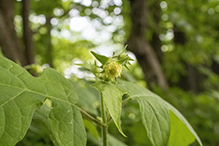 |
|||||
MinnesotaSeasons.com Photos |
|||||
Plant |
|||||
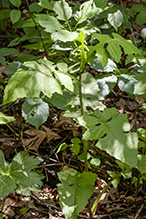 |
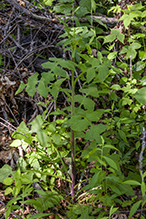 |
||||
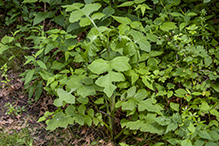 |
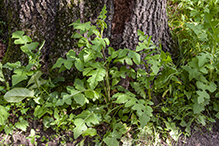 |
||||
Leaves |
|||||
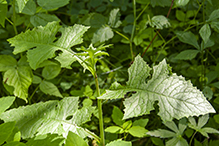 |
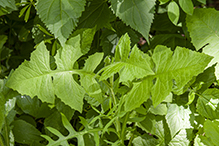 |
||||
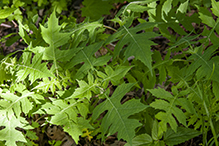 |
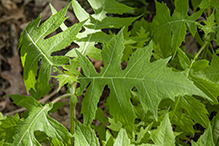 |
||||

Slideshows |
||

Visitor Videos |
|||
Share your video of this plant. |
|||
| This button not working for you? Simply email us at info@MinnesotaSeasons.com. Attach a video, a YouTube link, or a cloud storage link. |
|||
Other Videos |
|||

Visitor Sightings |
|||||
Report a sighting of this plant. |
|||||
| This button not working for you? Simply email us at info@MinnesotaSeasons.com. Be sure to include a location. |
|||||
| Greg Watson 6/28/2022 |
Location: Great River Bluffs State Park |
||||
MinnesotaSeasons.com Sightings |
|||||

Created: 8/2/2022
Last Updated:
